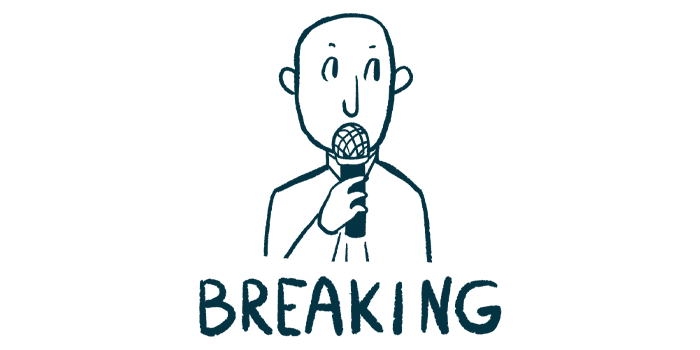Takhzyro in Easier to Use, Prefilled Syringe Now Available in US

A fully assembled, prefilled syringe form of Takeda’s Takhzyro (lanadelumab), approved to prevent swelling attacks in adults and children, ages 12 and older, with hereditary angioedema (HAE), is now available in the U.S.
“HAE attacks are unpredictable, debilitating and in some cases life-threatening, adding uncertainty and complexity to the daily lives of those living with this disease and their families,” William Lumry, MD, an allergy immunology specialist and a clinical professor of internal medicine at the University of Texas Southwestern Medical School, said in a press release.
“After many years in practice witnessing the ups and downs of this disease, I welcome any opportunity to simplify the process of administering an effective prevention therapy for people living with HAE,” Lumry added.
The single-dose syringe is a “ready-to-use option” with “fewer steps and less waste” and could be more convenient for patients than Takhzyro’s single-dose vial for injections, said Cheryl Schwartz, senior vice president of Takeda’s rare disease business unit.
Patients and caregivers should again be trained by a healthcare professional on how to administer the medication properly.
“Over the coming months, we will be working with patients and their specialty pharmacies as they are ready to make the transition,” Schwartz added.
The U.S. launch comes about two months after this newer form of Takhzyro was approved by the U.S. Food and Drug Administration (FDA) for use. Similar decisions were also granted by health authorities in Canada and Europe. Most recently, those in Japan favored its use.
Takhzyro, in the form of a single-dose vial, has been approved to prevent HAE attacks in patients ages 12 and older in the U.S., Canada, and the European Union since 2018. According to Takeda, the therapy, administered as an under-the-skin injection, is currently available in more than 30 countries worldwide.
Developed by Shire, now part of Takeda, Takhzyro is an antibody-based therapy that blocks the activity of kallikrein, a precursor of bradykinin — an inflammatory molecule overly produced in people with HAE, leading to bouts of swelling and pain.
As such, the therapy is expected to lower bradykinin levels and reduce the likelihood of HAE attacks.
Its recommended starting dose is 300 mg every other week, but once-a-month dosing may be considered, particularly for patients who remain attack-free for more than six months and have low body weight.
Takhzyro’s regulatory approvals were mainly based on data from the international Phase 3 HELP trial (NCT02586805) that involved 125 people, ages 12 or older, with HAE types 1 or 2 — making it one of the largest prevention studies in HAE.
Results showed that Takhzyro, when given as recommended for six months, significantly reduced the monthly frequency of HAE attacks by 87% relative to a placebo. Patients on this treatment regimen were also seven times more likely to show clinically relevant quality-of-life improvements than those on a placebo.
Additional results from HELP’s open-label extension study (NCT02741596) supported Takhzyro as a safe and effective therapy for up to 2.5 years.
The therapy’s benefits were also confirmed in a real-world setting, with about one year of treatment within the Phase 4 EMPOWER trial (NCT03845400) lowering HAE attack rate, and improving patients’ quality of life and treatment satisfaction.
The most common side effects seen with Takhzyro include injection site reactions (pain, redness, and bruising), upper respiratory infection, headache, rash, muscle pain, dizziness, and diarrhea.







